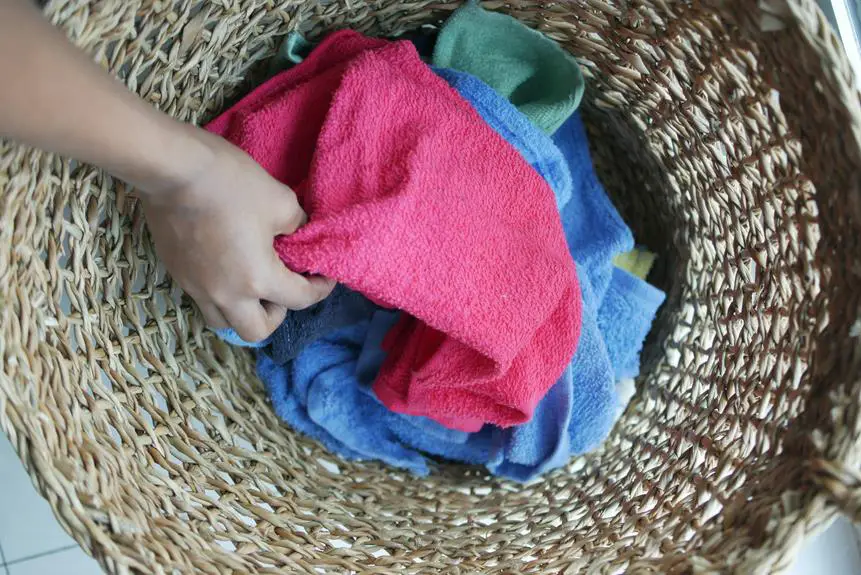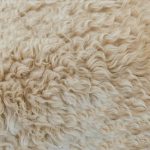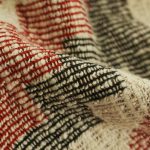When it comes to choosing between French terry and regular cotton, you're likely weighing the pros and cons of each fabric type. You might be wondering, for instance, whether the superior softness and breathability of French terry are worth the potentially higher cost and more delicate care requirements. On the other hand, regular cotton's affordability and durability might be tempting, but will it meet your needs for comfort and performance? As you consider these factors, you're probably starting to realize that the decision isn't as straightforward as it seems – and that's exactly where the complexity begins.
Table of Contents
French Terry Fabric Characteristics
When you run your hand over French terry fabric, you'll notice its distinct characteristics, which set it apart from regular cotton. You'll feel the soft, plush pile on one side and the smooth, flat surface on the other.
This unique texture is due to the fabric's looped pile construction, where the yarns are looped on the surface to create a soft, absorbent fabric.
As you examine the fabric more closely, you'll notice its durability and resistance to wear and tear. French terry fabric is known for its ability to withstand repeated washing and use without losing its shape or softness.
This makes it an ideal choice for clothing and textiles that require both comfort and durability.
The fabric's absorbency is another notable characteristic. The looped pile construction allows for excellent airflow and moisture-wicking properties, making it perfect for active wear or towels.
Additionally, French terry fabric is often made from a blend of cotton and polyester, which adds to its durability and wrinkle-resistance.
Regular Cotton Fabric Benefits
Regular cotton offers a great balance of breathability and softness, making it a comfortable choice for everyday wear.
As you examine the benefits of regular cotton, you'll also discover its durability and longevity, as well as easy care options that make it a practical choice for many applications.
Breathability and Softness
Regular cotton's unique weave contributes to its exceptional breathability and softness, making it a top choice for casual wear. The weave of regular cotton allows for better airflow and moisture transfer, which means that it can help regulate your body temperature and prevent overheating.
This makes regular cotton an excellent choice for garments like t-shirts, tank tops, and shorts that are designed to keep you cool and comfortable.
When you wear regular cotton, you'll notice that it has a soft, gentle texture against your skin. This is due to the natural fibers of the cotton, which are less prone to pilling or snagging than other types of fabric.
The softness of regular cotton also makes it an excellent choice for undergarments and sleepwear, as it can help reduce irritation and discomfort.
Durability and Longevity
Regular cotton's durability and longevity are further enhanced by its ability to withstand repeated washing and wear without losing its shape or softness, making it a great investment for your wardrobe.
When you choose regular cotton, you're investing in a fabric that can keep up with your busy lifestyle. It can handle the rigors of daily wear and tear, and still look great after multiple washes. This is especially important if you're looking for a fabric that can be passed down or worn frequently.
You'll also notice that regular cotton is less prone to pilling or fraying, which can extend the life of your garments. This means you can enjoy your favorite cotton clothes for years to come, without worrying about them falling apart.
Additionally, regular cotton's durability makes it a great choice for items that need to withstand heavy use, such as towels, bedding, and work clothes.
Easy Care Options
When considering your options between French Terry and Regular Cotton fabrics, it's essential to evaluate the level of maintenance and care you're willing to dedicate. One advantage of regular cotton fabrics is that they generally offer easier care options, allowing you to keep them in excellent condition with less fuss.
In most cases, regular cotton can be washed, dried, and worn again with little trouble, providing the most carefree solution. Compared to some materials like silk, velvet, or others with a different density, regular cotton requires less elaborate means of care.
Cleaning wise, regular cotton generally requires less effort and cost. Depending on who you ask, regular cotton may be considered perfect for those who want to keep their clothes in great condition with little worry.
French Terry, on the other hand, does have its own set of issues when it comes to maintenance. However, the benefits of French Terry may outweigh the extra effort required to care for it.
It's essential to consider the level of maintenance and care you're willing to dedicate to your fabrics before making a decision. By evaluating your options and considering your needs, you can choose the best fabric for you.
Absorbency and Moisture Wicking
French terry and regular cotton fabrics handle sweat and moisture differently.
French terry generally offers better absorbency and moisture-wicking capabilities. This is due to the unique looped pile construction of French terry, which creates a larger surface area for moisture to evaporate.
In contrast, regular cotton fabrics tend to absorb moisture but can take longer to dry. This can lead to a clammy, uncomfortable feeling against your skin. When you're engaging in high-intensity activities or living in hot and humid climates, the difference in absorbency and moisture-wicking capabilities between French terry and regular cotton can be significant.
When choosing between French terry and regular cotton, consider your specific needs and preferences. If you prioritize comfort and performance, French terry's superior absorbency and moisture-wicking capabilities make it the better choice. However, if you're looking for a more casual, everyday fabric, regular cotton may still be a suitable option.
Durability and Longevity Comparison
Given its distinct texture and looped pile construction, French terry tends to exhibit enhanced durability and resistance to pilling and wear, allowing it to maintain its integrity longer compared to regular cotton fabrics that often exhibit fraying or other forms of deterioration more easily.
When you choose French terry, you're investing in a fabric that can withstand the test of time and repeated use.
French terry outperforms regular cotton in terms of durability in three key ways:
- Reduced pilling: French terry's looped pile construction helps to prevent pilling, which can make your clothes look worn and frayed.
- Improved resistance to snagging: The dense, plush texture of French terry makes it more resistant to snagging and running, which can ruin the fabric's appearance.
- Longer lifespan: Overall, French terry's enhanced durability means it can withstand repeated washing and wear without losing its shape or integrity, making it a great choice for clothing and textiles that need to last.
Softness and Comfort Levels
When you compare French terry and regular cotton, you'll notice a difference in how they feel against your skin.
The texture of French terry is often described as plush and soft, making it a great choice for clothing that requires comfort.
As you consider which fabric is right for you, think about how important softness is – do you prioritize a gentle feel, or are you okay with a slightly rougher texture?
Fabric Texture Comparison
Comparing the softness and comfort levels of French terry and regular cotton fabrics, it's clear that French terry's unique texture, with loops of yarn on one side and a smooth surface on the other, provides a distinct tactile experience that can make a big difference in how you feel against your skin.
When you touch French terry, you'll notice a subtle give and take, as the loops of yarn provide a slight cushioning effect. This texture is more pronounced than regular cotton, which tends to be flat and smooth.
French terry has a more three-dimensional texture than regular cotton, with visible loops of yarn that create a subtle ridging effect.
French terry typically has a denser yarn construction than regular cotton, which contributes to its softness and absorbency.
While the loop side of French terry is textured, the smooth side is often just as smooth as regular cotton, providing a comfortable surface for next-to-skin wear.
Comfort Against Skin
As you slip into a French terry garment, you'll likely notice its exceptional softness against your skin, which is largely due to the unique texture and yarn density that set it apart from regular cotton. French terry's looped pile construction creates a plush surface that gently caresses your skin, making it perfect for loungewear, activewear, and even sleepwear.
The softness isn't just superficial; it's also breathable, allowing for airflow that helps regulate your body temperature.
In contrast, regular cotton can sometimes feel stiff or scratchy against your skin, especially if it's not pre-washed or treated with softening agents. While regular cotton can still be comfortable, it often can't match the luxurious feel of French terry.
When you're wearing French terry, you'll appreciate the way it conforms to your body, providing a sense of comfort and security that's hard to find with regular cotton. Whether you're lounging around or engaging in physical activity, French terry's softness and breathability make it an excellent choice for next-to-skin wear.
Care and Maintenance Differences
French terry and regular cotton have distinct care requirements, mainly due to their differing fabric constructions and densities.
When it comes to washing, French terry requires more gentle care to prevent pilling or snagging.
- Washing temperature: French terry typically requires cold water, while regular cotton can usually handle warm or hot water.
- Drying method: French terry is best air-dried or tumble-dried on a low setting, whereas regular cotton can often be machine-dried on a higher heat setting.
- Ironing: French terry can be prone to scorching, so it's best to iron it on a low setting or use a steamer, while regular cotton can usually handle higher heat settings.
French terry may require a bit more TLC to keep it looking its best. With proper care, it can remain soft and cozy for a long time.
Regular cotton, on the other hand, is often more forgiving and can withstand rougher handling.
Frequently Asked Questions
Can French Terry Be Used for Formal Wear?
You might think French terry is too casual, but you can use it for formal wear with creative styling. Look for darker colors and pair it with dressy accessories to elevate the outfit. It's all about balance.
Is Regular Cotton Suitable for Athletic Wear?
You're considering regular cotton for athletic wear, but it's not the best choice. Cotton absorbs sweat, becoming heavy and uncomfortable. It also loses shape and shrinks, making it less ideal for high-performance athletic activities.
Does French Terry Shrink More Than Regular Cotton?
You're probably wondering if French terry shrinks more than regular cotton. Generally, French terry does shrink, but not excessively. It'll likely lose a bit of its shape, but it'll still retain its softness and texture.
Can I Iron French Terry Fabric?
You can iron French terry fabric, but it's best to use a low heat setting to avoid damaging the fibers. Pre-treat any stubborn wrinkles with steam, and don't iron over seams or ribbing for best results, you'll achieve a smooth finish.
Is French Terry More Expensive Than Regular Cotton?
You'll likely find that French terry is pricier than regular cotton due to its unique weaving process and softer, more absorbent properties. Expect to pay a bit more for clothing and fabrics made from French terry.
- Tetron Fabric for Marine Applications: Durability and Use Cases - June 18, 2025
- Tetron Fabric for Outdoor Furniture: Weather Resistance and Care - June 18, 2025
- Tetron Fabric for Wall Coverings: Style and Application Tips - June 18, 2025







